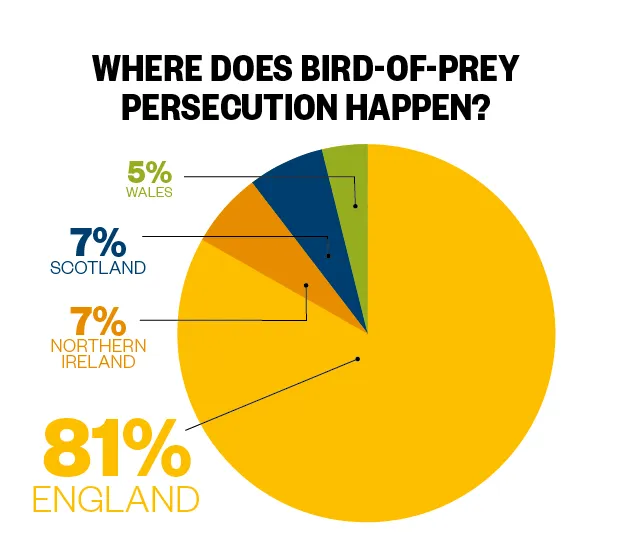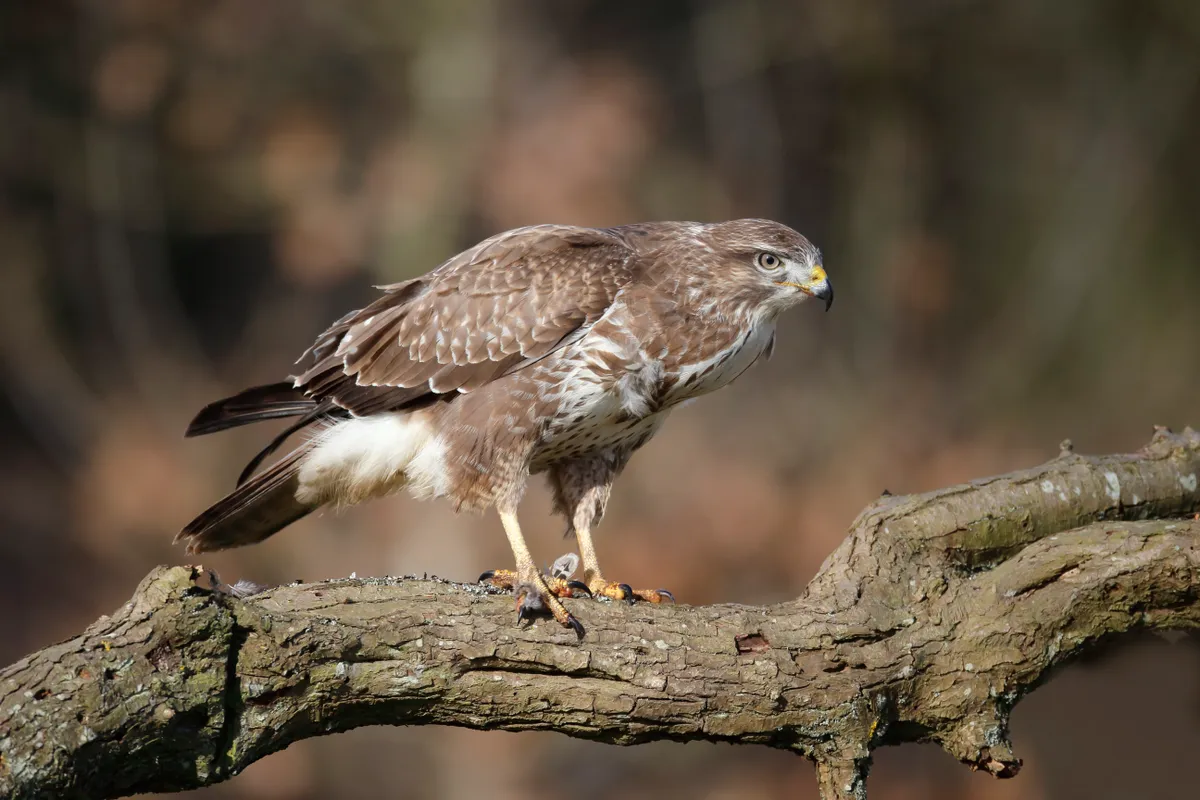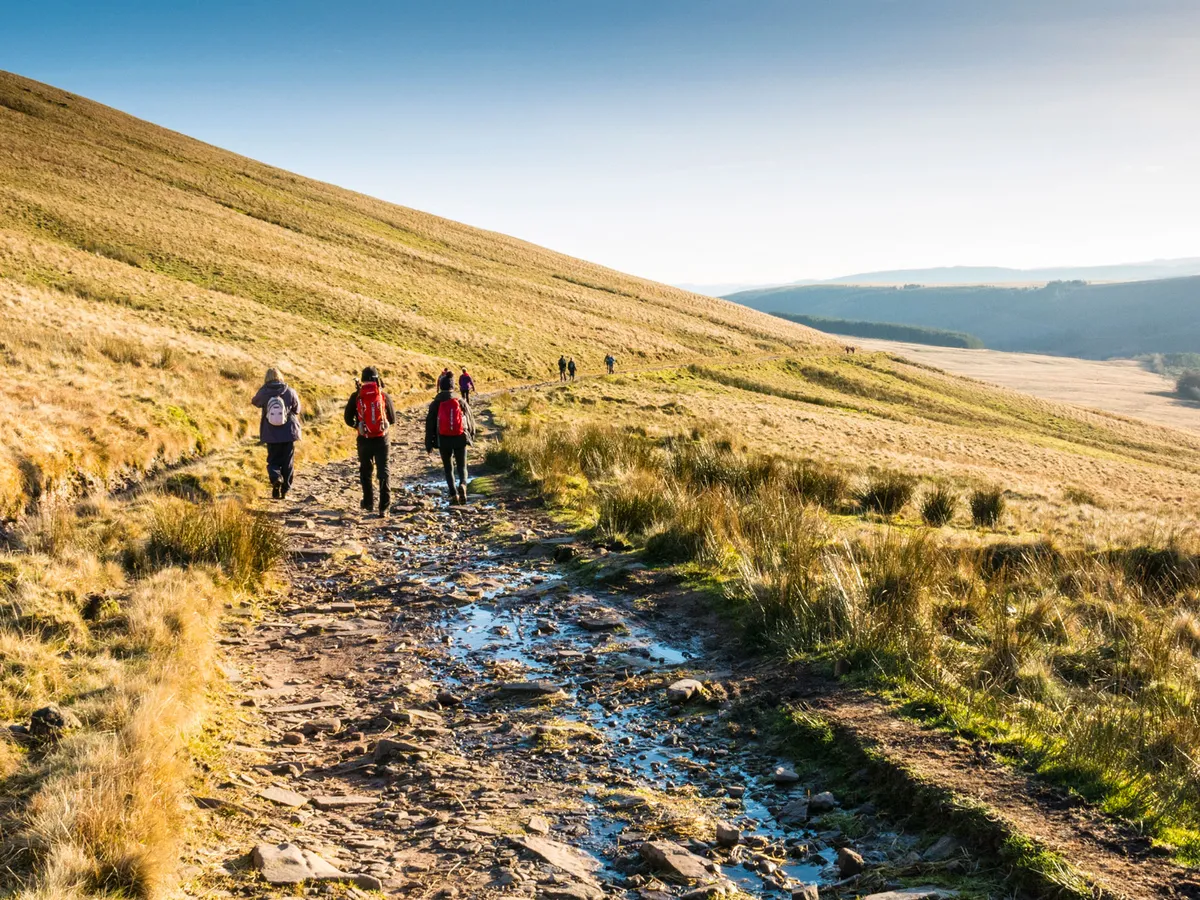What is the problem?
The RSPB’s Birdcrime 2017 report highlights hen harrier persecution (other birds of prey crimes are also included). Hen harriers live on moors and hunt for birds and small mammals. Where they fly over moors that host grouse shooting, they also take grouse chicks, putting them in conflict with gamekeepers. Satellite tags that track the movements of birds of prey have collected irrefutable evidence of their persecution: 68% of all hen harriers tagged by Natural England have vanished on or near grouse moors. “The bird and the tag just disappear and we can pinpoint exactly where that happens,” says Mark Thomas of the RSPB’s investigations unit. Typically, the carcass will be incinerated and the tag smashed with a mallet.
Ellie Harrison: the plight of the starling in Britain
How to prepare your garden for autumn and winter birds

2017’s recorded birdcrime incidents
The report highlights incidents featuring the major raptor species in the UK. “These are confirmed cases, accepted by the police as reliably recorded; in some cases, police themselves have witnessed the crimes,” says Thomas. Some gamekeepers have provided intelligence about estates where hen harriers have been killed.
Shooting: A first-hand account of a man shooting a hen harrier on a driven grouse moor in South Lanarkshire was given to Police Scotland in 2017. The same month on this estate, a witness heard a single gunshot. The next day, the RSPB recovered the body of a short-eared owl. Police investigated both incidents but no prosecution has followed.
Poisoning: In May 2017, two adult peregrine falcons were found poisoned at a quarry in Shropshire. They had died after eating a pigeon illegally laced with diazinon. The RSPB says the site has a history of poison being used to target birds of prey. No one has been charged with the crime. More happily, a chick was rescued and fledged.
Nest disturbance:
A marsh harrier nesting attempt was recorded at a grouse estate in North Yorkshire in May 2017. RSPB officers installed a covert camera to monitor the nest. The footage revealed armed men visiting the nest and removing eggs. Four other uncategorised incidents of persecution were recorded in 2017.

Does grouse-moor management help harriers?
The Game and Wildlife Conservation Trust argues that the demise of grouse moors would adversely affect hen harriers. “The irony is that gamekeepers actually protect hen harriers,” says Dr Adam Smith, GWCT’s director for Scotland. Smith points to Langholm Moor in Dumfries & Galloway, which has been monitored for predator-prey interaction. “That showed that if raptor predation of grouse chicks is too high then management is withdrawn, sheep graze the land, the heather deteriorates, foxes and crows come in and predate on hen harrier chicks,” he says. “This is not a simple story; so many people are not prepared to listen.”
Smith suggests legal measures, such as brood management, may help. This sees raptor chicks removed from nests and raised in an aviary, then later released near to where they were taken. “It is unpopular with some but it means raptors are not taking grouse chicks to feed their own chicks.”
An RSPB study in the Peak District National Park suggests strong associations between intensive grouse-moor management in the Dark Peak and raptor persecution: goshawks and peregrines declined significantly in the Dark Peak between 1995 and 2015 but increased five-fold and 20-fold respectively elsewhere in the park.
“There’s growing public knowledge and anger about what is going on,” said Martin Harper, conservation director at the RSPB. “Unless the grouse industry changes, there will come a point when that anger is focused less on the welfare of birds of prey and more on shooting.”

What is the shooting community doing about it?
Amanda Anderson, director of the Moorland Association, says the report, in contrast to the RSPB’s interpretation, contained positive news. “This report demonstrates that progress is being made on the issue of raptor persecution,” she says. “We are committed to a representative assemblage of birds of prey across our uplands.” She added that she was encouraged by a decrease in confirmed incidents of persecution of 15% from 2016. The RSPB’s Mark Thomas responded: “Every year, the shooting community points to a hen harrier that has fledged and that the corner has been turned. But we report the same statistics year after year; it’s not changing. The defence is always that it’s a rogue gamekeeper but this is not just a bloke down the road doing this; this is industry-wide. We conduct our survey every year; you can’t dismiss this as just one year’s statistics.”
What more can be done?
Many conservationists believe changes are needed. “Even if we get a conviction, it doesn’t bring the bird back,” says the RSPB’s Mark Thomas. “We need to stop it happening in the first place.”
Bird crime has now been categorised a national priority by the police, but some senior wildlife figures, such as former RSPB conservation director Mark Avery, are calling for a complete ban on grouse shooting. The RSPB favours a licensing system, whereby estates must apply for a licence in order to conduct shoots. If a bird of prey is killed on the estate, or nearby, the licence would be withdrawn. “That could be for up to five years,” says Thomas. “If an estate costs £24m to buy and you charge £10,000 for a shoot, that would make them think twice.”

Birdcrime and the public
Walkers, bird lovers and other outdoor enthusiasts can help monitor birdcrime when they’re in the countryside, says the RSPB. “The public are our eyes and ears,” says Thomas. “If they see something that seems odd, they can call us.” The RSPB and Natural England are keen to raise awareness of the issue.
What does the law say?
The prevailing view among conservationists is that the law in England and Wales is inadequate. Alleged bird crimes are treated as summary offences, which means they are heard in magistrates’ courts. “Cases can be hard to prove because the defendants will often have top QCs, paid for by their employers,” says Thomas. Of the 68 confirmed cases in 2017, only four prosecutions and one conviction were secured. Also, film footage of gamekeepers killing birds has been presented in court in England but can be deemed inadmissible if the defence maintains it is not comfortable with surveillance. In Scotland, such footage has a higher rate of convictions. Scotland has the additional charge of vicarious liability, that can see a landowner charged if a bird is killed on their property, even if they did not commit the act themselves.
